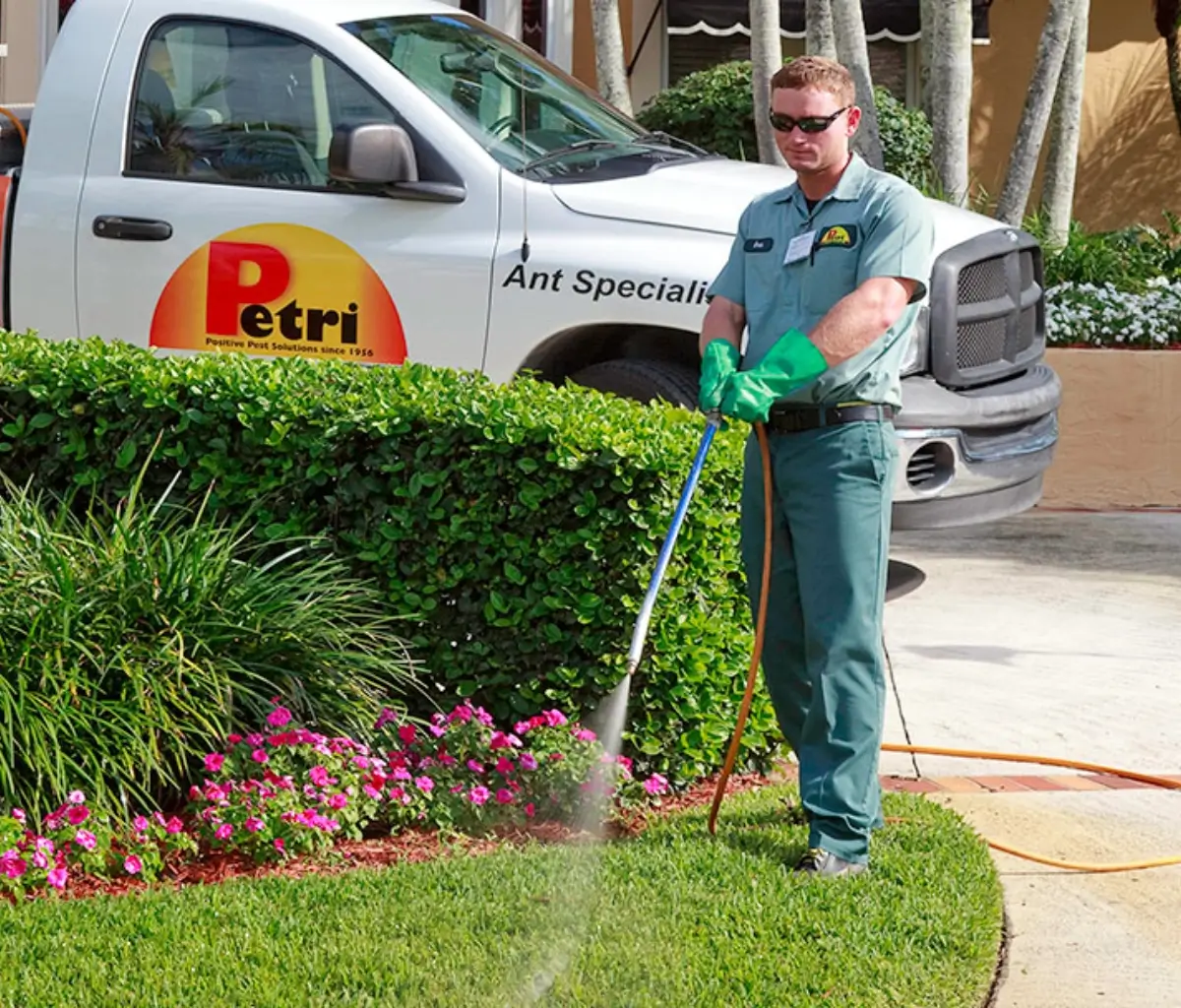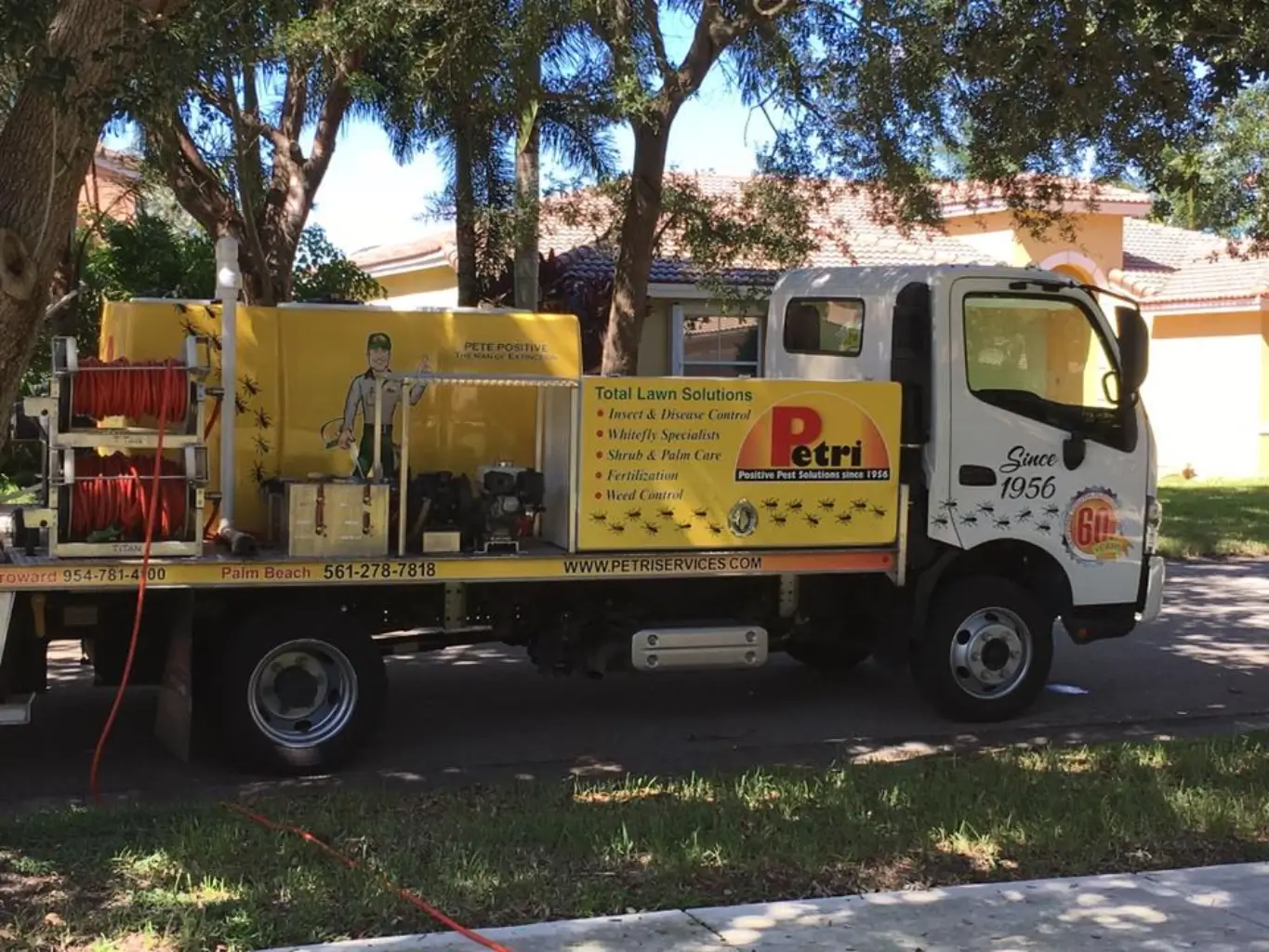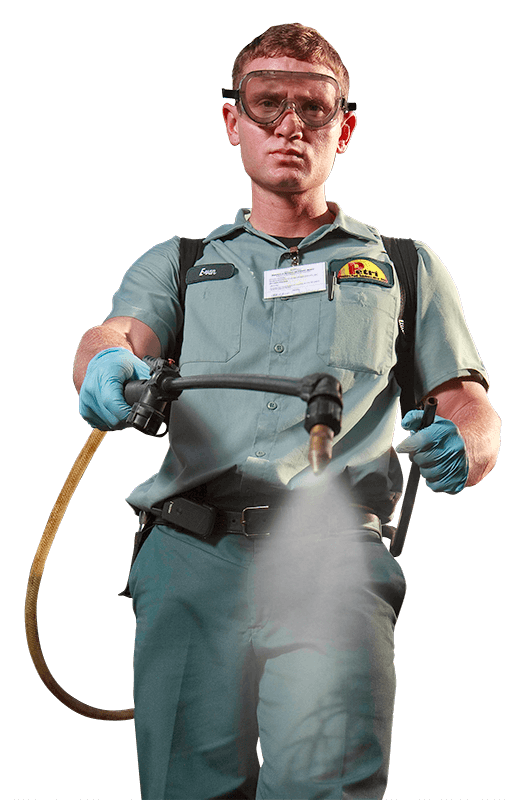Lawn & Shrub Care
Serving Pompano Beach, Boynton Beach, and surrounding areas
Healthy, green lawns with lush shrubs and tropical ornamental plants enhance the beauty and value of your home or business. Many factors contribute to a healthy, green lawn, including proper mowing, watering, and fertilizing practices. Without this balance, lawns are subjected to stress, setting the stage for adverse conditions, including disease, insects, and weeds.
Petri Pest Control Services, Inc. offers lawn and shrub services that take into account all of the unique traits of your yard.
Get your personalized quote in a few clicks.

Lawn Care & Treatment
Petri Pest Control Services, Inc., your neighborhood pest control service, offers a full suite of lawn and shrub care and treatment services to residential and commercial properties in Palm Beach County and Broward County.
- General Lawn Program
- Total Lawn Program (TLP)
- Shrub Care
- Whitefly Treatment
General Lawn Program
At Petri Pest Control Services, Inc., we pride ourselves on a comprehensive lawn program that focuses on soil health and working with the environment. Our approach allows us to use fertilizer more effectively, even as we increase its application this year.
Total Lawn Program (TLP)
Our full-service program covers lawn-damaging insects, fungi, diseases, and weed control. We aim to improve the overall lawn health, color, and growth of your outdoor space. While we exclude treatment for sugar cane mosaic virus and crabgrass, we specialize in managing chinch bugs, army worms, and sod webworms. We use systemic slow-release products to prevent these pests during high-activity periods.
Shrub Care
Our shrub program includes insect and fungus control, fertilization, and treatments for various pests and diseases, improving flowering plants and overall landscape color while reducing pest presence around homes. Our quarterly palm care service addresses issues like yellowing chlorosis, palm aphids, and various nutrient deficiencies through fertilization, insect control, and root drenches.
Whitefly Treatment
In South Florida, we offer separate Ficus Whitefly treatments, combining topical and soil applications on a quarterly basis. We’re also considering including liquid aeration in our Florida services, offering it as a free add-on with lawn care, particularly effective during the hot and wet Florida summers.
Get an Instant Quote Over the Phone
Petri Pest Control gives all customers a FREE initial quote. Fill out the form below to find out how Petri can help you today!
"*" indicates required fields
A Trusted Pompano Beach Lawn & Shrub Care Company
Picturesque, beautiful Florida lawns are the product of proper care in addition to extensive knowledge about lawn and shrub pests and fungus conditions common to Florida turfs, and the skills essential to controlling these pest and disease conditions. Petri Pest Control Services offers residential and commercial customers in Broward County and Palm Beach County an array of services to ensure lawn and shrubs are properly cared for.

Our Lawn & Shrub Care Services




Serving Pompano Beach since 1956
Lawn & Shrub Care in Pompano Beach
Pest Control in Pompano Beach and Boynton Beach
Pompano Beach | Miami | Fort Lauderdale | Hollywood | Boynton Beach | Lantana | Hialeah | Deerfield Beach | Coral Springs
Coconut Creek | Hallandale | Pembroke Pines | Oakland | Boca Raton | Delray Beach | West Palm Beach | Gulfstream | Miami Beach | Miami Lakes
Home » Lawn & Shrub Care
